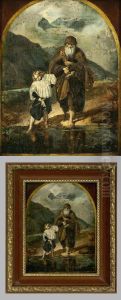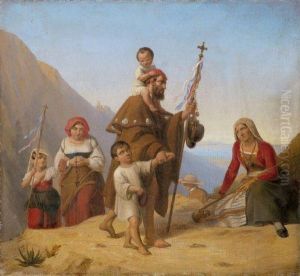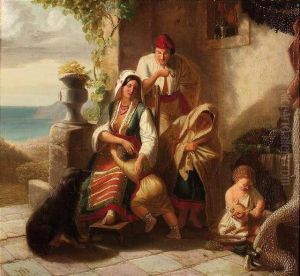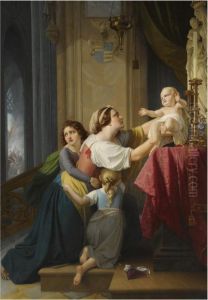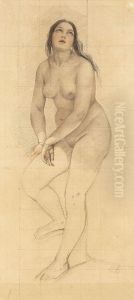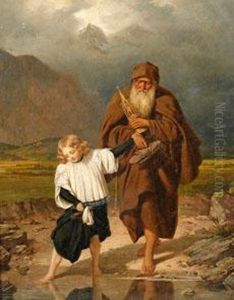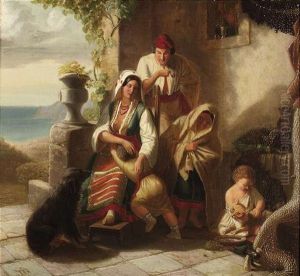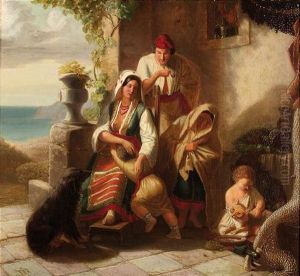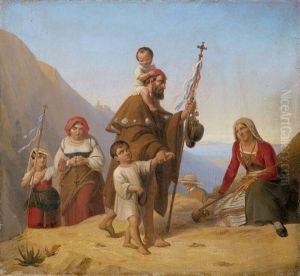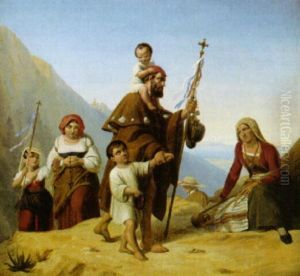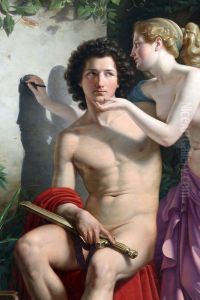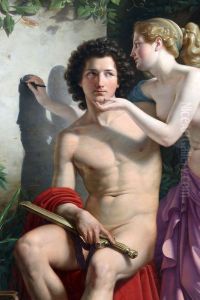Eduard Daege Paintings
Eduard Daege was a German painter born in Berlin in 1805. He is recognized for his contributions to the Berlin art scene during the 19th century, particularly in the realms of historical and religious painting. Daege's career was deeply influenced by the artistic movements of his time, as well as the political and cultural shifts occurring in Germany and across Europe.
Daege received his initial artistic training at the Prussian Academy of Arts in Berlin, where he was influenced by the teachings of classicist artists. This education laid the foundation for his style, which combined elements of neoclassicism and romanticism, evident in his meticulous attention to detail and his focus on dramatic, often historical, subject matter.
In 1830, Daege's talents were recognized when he became a member of the Berlin Academy, and his career continued to flourish. He was appointed as a professor at the academy in 1837, a role that allowed him to influence a new generation of artists. His commitment to art education and his position at the academy underscored his impact on the Berlin art scene.
Throughout his career, Daege was commissioned to create several significant works for public and private collections. His ability to capture the essence of religious and historical narratives in his paintings was particularly admired. Daege's works are characterized by their detailed composition, vibrant color palette, and the emotional depth of their subjects.
Daege's contributions to the German art world were not limited to his paintings; he played a crucial role in the administration of the Berlin Academy of Arts, serving as its director from 1869 until his death in 1883. Under his leadership, the academy became a central institution for the arts in Prussia, fostering artistic talent and promoting the arts throughout the region.
Eduard Daege passed away in 1883, leaving behind a legacy as one of the leading figures in 19th-century German art. His works continue to be studied and appreciated for their historical significance and artistic merit, representing a pivotal period in the evolution of German painting.
